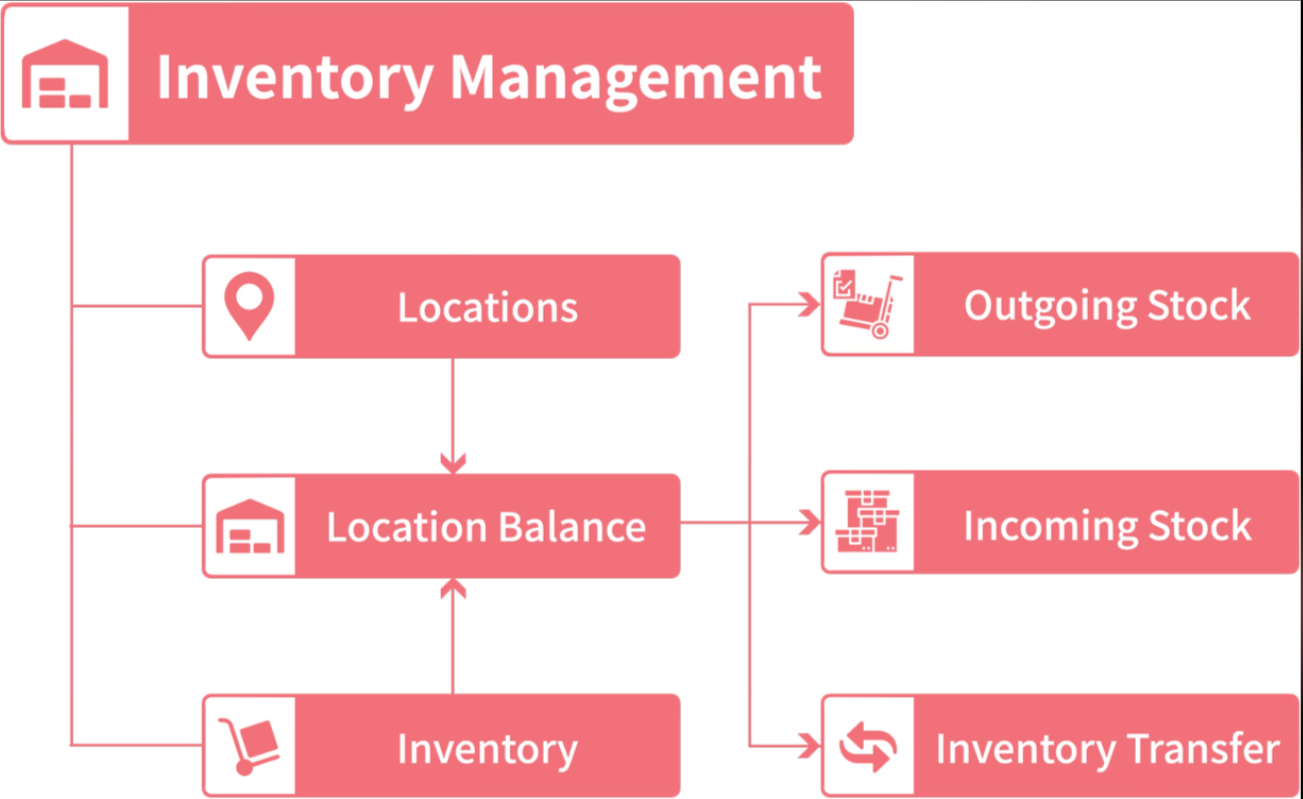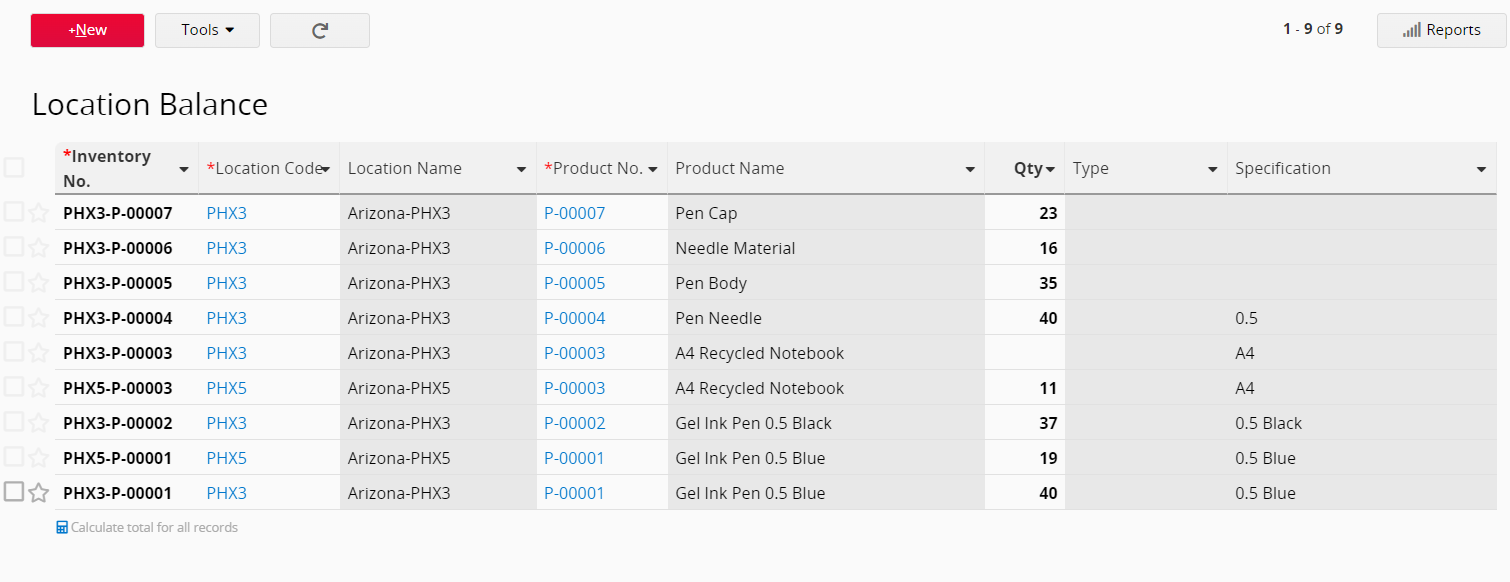Taking inventory a constant thorn in the side? Too many locations and too many products turning inventory data into a mess that is impossible to manage in real time? A lack of accurate inventory records making it necessary to take inventory manually in a time-consuming and labor-intensive process?
Ragic’s Inventory Management template makes inventory management easy by offering quick access to inventory data at each location and streamlining incoming and outgoing stock record management in the database.
Our PSI template is comprised of three separate templates: Sales Order Management, Purchasing, and Inventory Management. If you only need the functions of one of these, it can be installed separately as well.
If you don’t have a Ragic account, click here to install only the Inventory Management template or click here to install the full templates of PSI. (If you’re already a Ragic user, find the PSI template under the "Template Suites" category in the Install Templates and download it.)

Please see below for instructions on the Inventory Management template.
The Inventory Management template is designed to manage inventory from locations to total quantities at each location. It also manages sheets related to inventory change, such as Outgoing Stock, Incoming Stock, and Inventory Transfer.
This template consists of 6 sheets. Please refer to the flowchart below for an overview of the sheets included and their corresponding data input workflow.

The "Locations" sheet is used to manage information at different locations. The Location Code must be a Unique Value and, like the Location Name, is Not Empty.


The Inventory in the "Inventory Management" template is divided into two levels. One level is the "Inventory", which focuses on individual products; the other is the "Location Balance", which focuses on the quantity of each product at each location. (For example, a product may be stored at multiple locations.)
The "Inventory" sheet, the Sales Order Management template’s "Products (SO)" sheet, and the Purchasing template’s "Products (PO)" sheet are Multiple Versions; they share the same data source. In other words, when you add a new item to the "Inventory" sheet, the item will also appear in the "Products (PO)" and "Products (SO)" sheets.
Unlike the "Products (SO)" sheet, the Subtable in the "Inventory" sheet is used to manage the quantity of a product at each location. The sum of the quantities at individual locations is the Total Qty.

"Location Balance" in the "Inventory" sheet can be added directly in the Subtable. After selecting the Location Code, the Location Name will be automatically loaded, and an Inventory No. (Location Code-Product No.) will be automatically populated. Please be sure to enter the Qty in Location Balance.

This is used to record the quantity of a product at a location. The current value of the Inventory No. is “Location Code-Product No.” and it is a Unique Value in this sheet.
This sheet is a new sheet generated from the Subtable in the "Inventory" sheet, so it is linked to the Subtable in the "Inventory" sheet. Each record in the Subtable in the "Inventory" sheet corresponds to a record in this sheet.

In addition to adding data from the "Product Location Balance" Subtable in the Inventory sheet, records can also be added from this sheet.
Location Code: Linked to the "Locations" sheet. Once selected, the Location Name will be automatically loaded.
Product No.: Linked to the "Inventory" sheet. Once selected, the Product Name, Type, and Specification will be automatically loaded.
Inventory No.: Assigned by formula, and its value is generated as Location Code-Product No..
Qty: Enter the inventory quantity.

The "Outgoing Stock" record can be created by converting a record from the "Delivery Note" in the "Sales Order Management" template, or by manually creating a record on the "Outgoing Stock" sheet. In the "Outgoing Stock Items" Subtable, select a Location Code to determine the inventory location from which the products will be shipped. Then, select the Inventory No. and confirm the Qty of outgoing stock.

After all records are created in the "Outgoing Stock" sheet, you can start the Approval Flow. When the record is approved, you can click the "Send Outgoing Stock" button, and the system will deduct the quantity of the outgoing stock from the "Location Balance", and fill in Outgoing Stock Time (date and time when the button is executed) automatically on the "Outgoing Stock" sheet.

The "Incoming Stock" record can be created by converting a record from the "Incoming Quality Control" in the "Purchasing Management" template, or by manually creating a record on the "Incoming Stock" sheet. In the "Incoming Stock" Subtable, select a Location Code to determine the inventory location where the products will be stored. Then, select the Inventory No. and confirm the Qty of incoming stock.

After all records are created in "Incoming Stock", you can start the Approval Flow. When the record is approved, click the "Incoming Stock" button, and the system will add the quantity of the incoming stock to the "Location Balance", and fill in the Incoming Stock Time (date and time when the button is executed) automatically on the "Incoming Stock" sheet.

The "Inventory Transfer" sheet allows the transfer of "Location Balance" between locations. It supports simultaneous transfers of "Location Balance" for multiple products.
When creating a new "Inventory Transfer" record, fill in the "Transfer Item" Subtable as follows:
Inventory No.: Select the Inventory No. of the item to be transferred. The system will automatically load the Product Name, Specification, From Location Code, and From Location.
Qty: Enter the inventory quantity to be transferred out.
To Location Code: After selecting the code, the To Location will be filled in automatically.
Note: Inventory No. is the serial number assigned to a product at a location. Therefore, selecting an Inventory No.. here will immediately identify which inventory location the product will be transferred from.
To transfer stock in, please make sure you have created the corresponding "Location Balance" record for the destined "Inventory Location" (the "To Location Code" you choose).
Executing the "Transfer" Action Button is to look up the existing "Location Balance" records and to add/deduct the quantities according to the Inventory No. If the "Location Balance" record (Inventory No) does not exist, you won't be able to transfer stock-in, as the system cannot create the record for you.

When all records are created, click the "Transfer" Action Button to execute Transfer. The system will deduct the outgoing quantity for the Inventory No, find the Inventory No in the Incoming Location (To Location Code), and add the quantity to the balance. The Posting Date is the date on which the transfer is executed.
 Thank you for your valuable feedback!
Thank you for your valuable feedback!